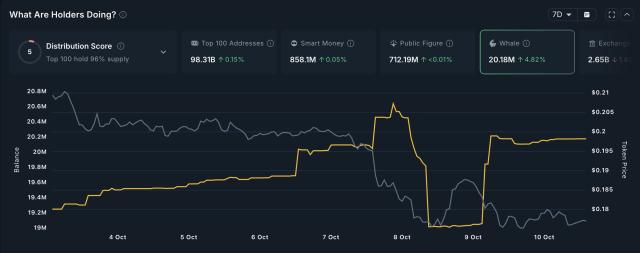India’s largest fintech conference, Global Fintech Fest (GFF) 2025, has deliberately left private cryptocurrencies and stablecoins out of its main agenda.
The move signals the government’s strategic shift away from speculative digital assets toward a state-regulated digital transformation. It also coincides with a major crackdown on foreign cryptocurrency exchanges, making it clear that India’s FinTech future is focused entirely on technologies under the supervision of the government and the Reserve Bank of India (RBI).
Government-led digital transformation dominates the agenda
GFF 2025 , which took place in Mumbai from October 7-9, was attended by key government figures, including the Union Finance Minister and officials from the RBI and the Ministry of Electronics and Information Technology (MeitY). However, XEM at the official topics and speaker list, one can see a consistent absence of private crypto assets.
Instead, the discussions focused on areas directly controlled by the state. These included financial applications of AI, national digital infrastructure (like DigiLocker), CBDC advancements , and sustainable finance. This model shows that authorities have deliberately classified private, unregulated crypto assets separately. India insists that these assets are not legal tender. This approach reinforces the government’s stance: financial innovation is only welcome on government terms.
FIU-IND enforcement action blocks foreign platforms
The decision to remove crypto from the mainstream FinTech conversation was underscored by concurrent aggressive regulatory action. In early October 2025, the Financial Intelligence Unit of India (FIU-IND) ordered access to 25 foreign cryptocurrency exchanges to be blocked for failing to register under the Prevention of Money Laundering Act (PMLA). These platforms failed to comply with India’s mandatory AML and KYC requirements.
This action is more than a mere warning. It represents the de facto removal of non-compliant platforms from the domestic market, reinforcing the government’s commitment to regulatory discipline. The FIU-IND order sends a clear message to the Web3 sector: failure to integrate into a regulated financial framework will result in exclusion from the market. This strict enforcement context explains the exclusion of cryptocurrencies from the GFF program. Authorities require all financial operators—digital or traditional—to meet strict domestic standards before they can be considered legitimate participants in India’s FinTech future.
India's Crypto Regulatory Dilemma: Stablecoins and CBDCs
Finance Minister Nirmala Sitharaman outlined the government's subtle but firm stance on digital assets on October 3, 2025.
Minister Sitharaman acknowledged the risks of volatile Virtual Digital Assets (VDAs). However, she said that countries must be “prepared to engage” with stablecoins. She recognized their potential to transform cross-border payments and financial infrastructure. This creates a regulatory dichotomy: India is committed to eliminating speculative VDAs to reduce systemic financial risks, but recognizes that the underlying technology of stablecoins cannot be ignored.
Ultimately, the country is pivoting its digital ambitions toward a CBDC and government-supervised digital infrastructure . The simultaneous crackdown and the removal of cryptocurrencies from the GFF program are strong signals. Reaching India’s massive consumer base requires full adoption and integration. This means compliance with the domestic regulatory framework. Companies looking to tap into the world’s fastest-growing FinTech market must align their strategies with the country’s vision of a regulated digital future.







